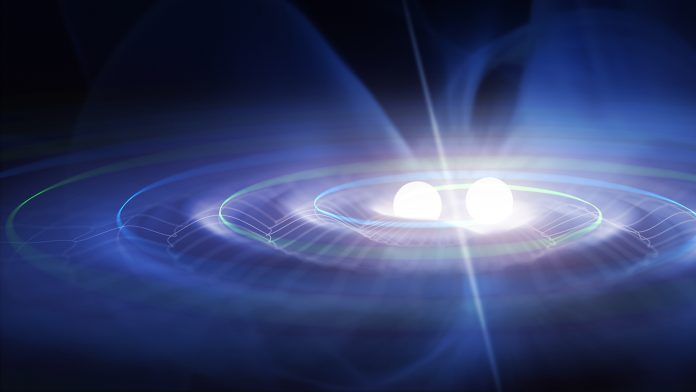A team of physicists has developed a method to detect gravitational waves with such low frequencies that they could unlock the secrets behind the early mergers of supermassive black holes.
The new method can detect gravitational waves that oscillate about once every thousand years. This is 100 times slower than any previously measured gravitational waves.
“These are waves reaching us from the farthest corners of the Universe, capable of affecting how light travels,” said Jeff Dror, PhD, an assistant professor of physics at the University of Florida and co-author of the new study.
“Studying these waves from the early Universe will help us build a complete picture of our cosmic history, analogous to previous discoveries of the cosmic microwave background.”
The work is published in the Physical Review Letters.
What are gravitational waves?
Gravitational waves are like ripples in space.
They vary in both frequency and amplitude, which offer insights into their origin and age.
Gravitational waves can oscillate at extremely low frequencies, much lower than those of sound waves detectable by the human ear.
In the past, some of the lowest frequencies detected were as low as one nanohertz.
“For reference,” Dror explained, “the frequency of sound waves created by an alligator roar are about 100 billion times higher than this frequency – these are very low-pitched waves.”
The new detection method
The team’s new method is based on analysing pulsars – neutron stars that emit radio waves at highly regular intervals.
They hypothesised that searching for a gradual slowdown in the pulses’ arrivals could reveal new gravitational waves.
The team used existing pulsar data to search for gravitational waves with the lowest-ever frequencies. This increased our hearing range to frequencies as low as ten picohertz, 100 times lower than previous efforts that detected nanohertz-level waves.
Origin of low-frequency gravitational waves
Although gravitational waves with low frequencies have been detected before, their origin remains unknown.
There are currently two theories.
The most popular theory is that these waves are the result of a merger between two supermassive black holes. If this is true, it will give researchers a new way to study the behaviour of the heaviest objects in the Universe.
The other theory is that these waves were created by a cataclysmic event in the history of the early Universe.
By studying gravitational waves at the lowest frequencies, the team has the potential to differentiate these possibilities.
Next steps for the team
“Looking ahead, the next step is to analyse newer data sets,” Dror said.
“The datasets we used were primarily from 2014 and 2015, and a huge number of pulsar observations have been undertaken since that time.”
The team also plans to run simulations on mock data using UF’s HiPerGator supercomputer.
The supercomputer can run large and complex simulations, reducing the time required to analyse data.
This study was supported in part by the National Science Foundation and the Department of Energy.









